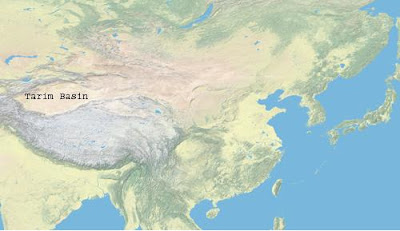Compulsory Education in China - separate and not even equal
On Friday, November 9, Lingxin Hao, Professor of Sociology at Johns
Hopkins University, visited the University of Pennsylvania to discuss the
migration of Chinese from rural to urban areas, specifically the children of
these migrants. Professor Hao recounted many of the established reasons for
migration, which include job opportunities in areas of higher Foreign Direct
Investment (FDI) and better educational opportunities for their children. However,
the realities of migration are that while many of the rural migrants do find
better job and education opportunities, they end up suffering the consequences
of extremely segregated communities and unequal access for education. As a
result of the unequal access to public education, migrants are, counter
intuitive to the idea of compulsory education, forced to enroll their children
in substandard private-institutions that exist to take in the neglected
children of migrants.
The root of the problem is very simple: while education is compulsory in
China, the government is not willing to foot the bill for policies that make equal
access a reality. Unfortunately, there is also not enough reliable research to
validate the claims of sociologists to make a compelling argument for the
government to implement new policies and change the existing ones. There are
also tremendous obstacles to conducting this kind of sociological research in
China. Hao recounted how she was forced to develop her guanxi, or her relationships with various personalities, including
teachers and principles, in order to conduct her research in the Chinese school
systems.
Further dampening attempts to attack this problem is the unwillingness
of the generally wealthier urban residents to acknowledge the inequalities in
the education system in a meaningful way. When a higher-quality urban school
reaches what Professor Hao described as a "tipping point" in the
number of rural migrants' children, these urban communities experience a
phenomenon very similar to that of "white flight" in the United
States. It is different because it is not within neighborhoods; in China the
flight is contained to schools - wealthier urban parents will relocate their
children to attend other schools.
One thing that I had wished I had asked about was about Hong Kong's
system of education. It was not mentioned in the presentation, but it is an
extreme example. It is a westernized, developed city that has managed to
cultivate a extremely racist public towards mainland Chinese migrants, their
failure to observe social expectations, and particularly their burden on public
services like transportation and the healthcare system.
While of course it seems like something too big to handle, I thought the
similarities in the United States were very interesting and beg several pointed
questions. While education in the United States varies from place to place,
there are minimum expectations for every school, and schools cannot reject
students on the basis of their birthplace, their ethnicity, color of their
skin, etc. In the United Sates, diversity within education has come to be
valued. China might be an economic powerhouse and international rival to the
United States on many levels, but it still has a long way to go before it
institutionally recognizes the values of diversity.
F. Miller, SAS '13

Comments
Post a Comment
We follow the House Rules as outlined by the BBC here.